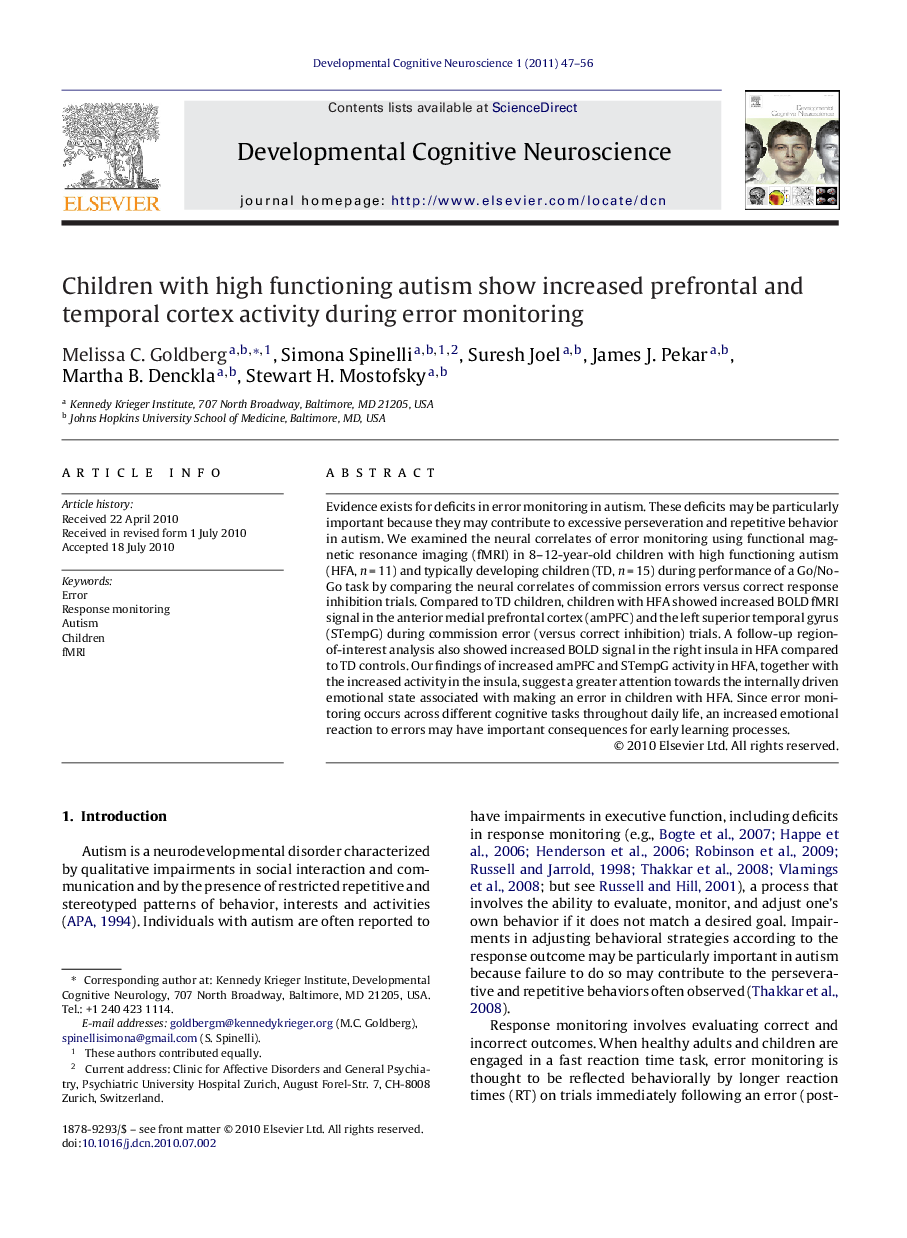| کد مقاله | کد نشریه | سال انتشار | مقاله انگلیسی | نسخه تمام متن |
|---|---|---|---|---|
| 4316755 | 1290552 | 2011 | 10 صفحه PDF | دانلود رایگان |

Evidence exists for deficits in error monitoring in autism. These deficits may be particularly important because they may contribute to excessive perseveration and repetitive behavior in autism. We examined the neural correlates of error monitoring using functional magnetic resonance imaging (fMRI) in 8–12-year-old children with high functioning autism (HFA, n = 11) and typically developing children (TD, n = 15) during performance of a Go/No-Go task by comparing the neural correlates of commission errors versus correct response inhibition trials. Compared to TD children, children with HFA showed increased BOLD fMRI signal in the anterior medial prefrontal cortex (amPFC) and the left superior temporal gyrus (STempG) during commission error (versus correct inhibition) trials. A follow-up region-of-interest analysis also showed increased BOLD signal in the right insula in HFA compared to TD controls. Our findings of increased amPFC and STempG activity in HFA, together with the increased activity in the insula, suggest a greater attention towards the internally driven emotional state associated with making an error in children with HFA. Since error monitoring occurs across different cognitive tasks throughout daily life, an increased emotional reaction to errors may have important consequences for early learning processes.
Figure optionsDownload as PowerPoint slide
Journal: Developmental Cognitive Neuroscience - Volume 1, Issue 1, January 2011, Pages 47–56